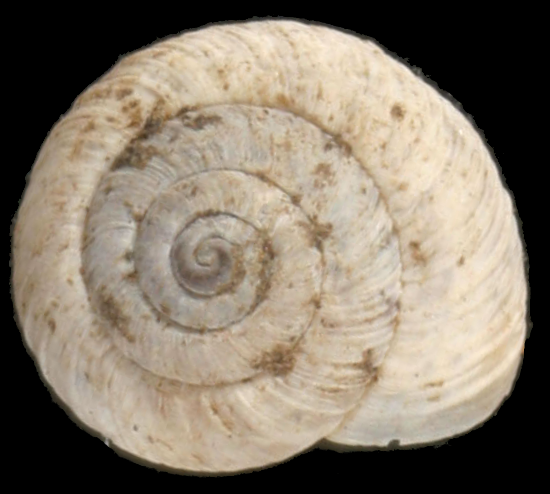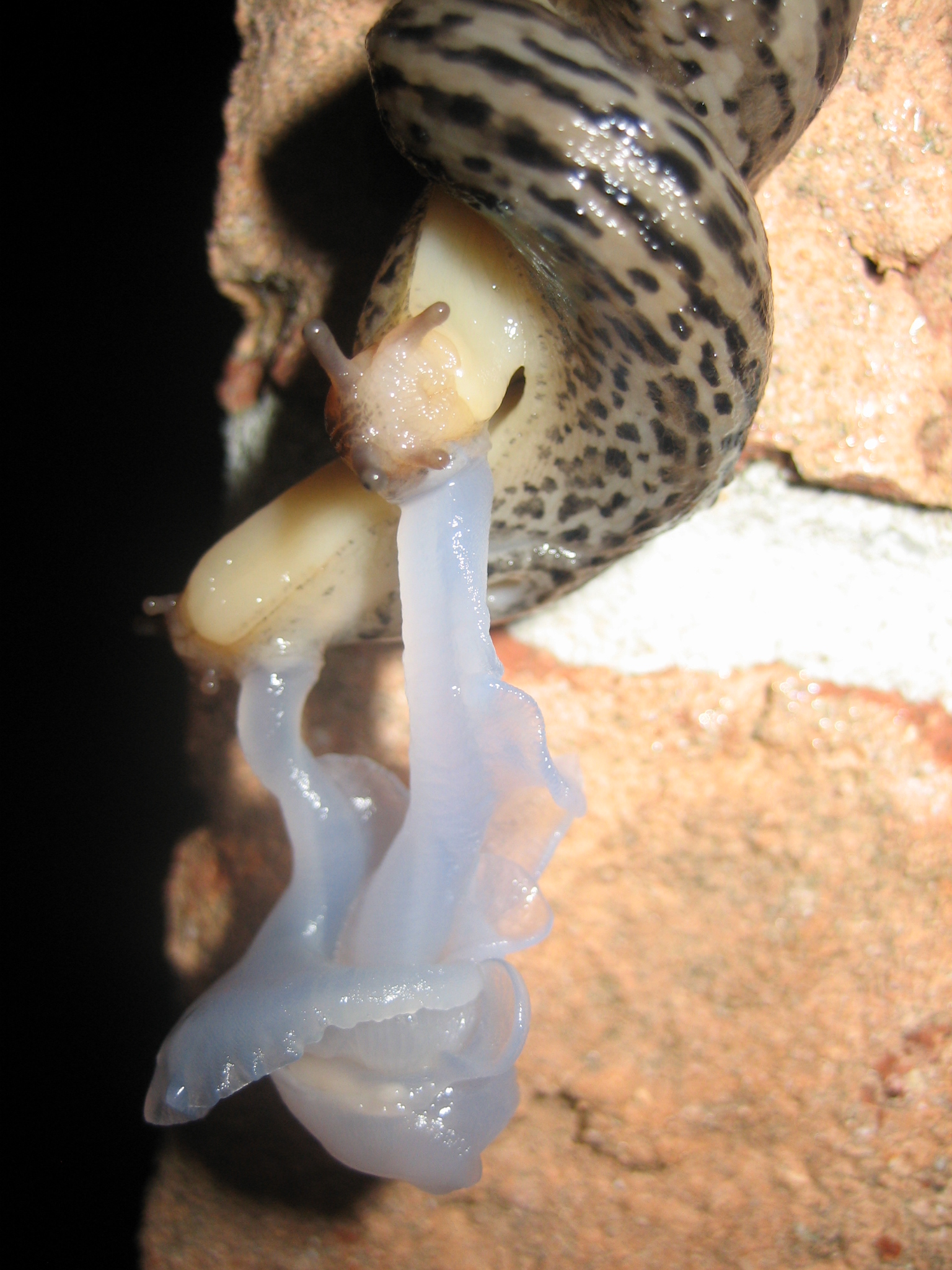|
Xerocrassa Geyeri
''Xerocrassa geyeri'' but as anomaly it was found also in 370 m above sea level in Mont Vertoux. ''Xerocrassa geyeri'' is hermaphrodite, hermaphroditic species and fertilisation is obligately outcrossing. The main reproduction period is from March to June and from September to October (according to the table values). It lays usually less than 10 uncalcified egss, but sometimes more (according to the table values). Juveniles are hatching from eggs in less than two weeks (according to the table values). They reach sexual maturity in one year and longevity of this species is 1–2 years. ''Xerocrassa geyeri'' feeds on dead plants, but rarely also on living plants, epilithic lichens and on algae. Its active Biological dispersal, dispersal capacity is about 3 m during its one-year lifetime. Its competitor may be ''Candidula unifasciata''. See also Species with similar shell include: * ''Helicopsis striata'' (Müller, 1774) * ''Candidula unifasciata'' (Poiret, 1801) References Th ... [...More Info...] [...Related Items...] OR: [Wikipedia] [Google] [Baidu] |
Gastropod Shell
The gastropod shell is part of the body of a Gastropoda, gastropod or snail, a kind of mollusc. The shell is an exoskeleton, which protects from predators, mechanical damage, and dehydration, but also serves for muscle attachment and calcium storage. Some gastropods appear shell-less (slugs) but may have a remnant within the mantle, or in some cases the shell is reduced such that the body cannot be retracted within it (semi-slug). Some snails also possess an operculum that seals the opening of the shell, known as the Aperture (mollusc), aperture, which provides further protection. The study of mollusc shells is known as conchology. The biological study of gastropods, and other molluscs in general, is malacology. Shell morphology terms vary by species group. Shell layers The gastropod shell has three major layers secreted by the Mantle (mollusc), mantle. The calcareous central layer, tracum, is typically made of calcium carbonate precipitated into an organic matrix known as c ... [...More Info...] [...Related Items...] OR: [Wikipedia] [Google] [Baidu] |
Type Specimen
In biology, a type is a particular specimen (or in some cases a group of specimens) of an organism to which the scientific name of that organism is formally attached. In other words, a type is an example that serves to anchor or centralizes the defining features of that particular taxon. In older usage (pre-1900 in botany), a type was a taxon rather than a specimen. A taxon is a scientifically named grouping of organisms with other like organisms, a set that includes some organisms and excludes others, based on a detailed published description (for example a species description) and on the provision of type material, which is usually available to scientists for examination in a major museum research collection, or similar institution. Type specimen According to a precise set of rules laid down in the International Code of Zoological Nomenclature (ICZN) and the International Code of Nomenclature for algae, fungi, and plants (ICN), the scientific name of every taxon is almost ... [...More Info...] [...Related Items...] OR: [Wikipedia] [Google] [Baidu] |
Love Dart
A love dart (also known as a gypsobelum, shooting darts, or just as darts) is a sharp, calcareous or chitinous dart which some hermaphroditic land snails and slugs create. Love darts are both formed and stored internally in a dart sac. These darts are made in sexually mature animals only, and are used as part of the sequence of events during courtship, before actual mating takes place. Darts are quite large compared to the size of the animal: in the case of the semi-slug genus ''Parmarion'', the length of a dart can be up to one fifth that of the semi-slug's foot. The process of using love darts in snails is a form of sexual selection. Prior to copulation, each of the two snails (or slugs) attempts to "shoot" one (or more) darts into the other snail (or slug). There is no organ to receive the dart; this action is more analogous to stabbing, or to being shot with an arrow or flechette. The dart does not fly through the air to reach its target, but is "fired" as a contact ... [...More Info...] [...Related Items...] OR: [Wikipedia] [Google] [Baidu] |
Xerocrassa
''Xerocrassa'' is a genus of small, air-breathing land snails, terrestrial pulmonate gastropod molluscs in the family Geomitridae. MolluscaBase eds. (2022). MolluscaBase. Xerocrassa Monterosato, 1892. Accessed through: World Register of Marine Species at: https://www.marinespecies.org/aphia.php?p=taxdetails&id=996348 on 2022-08-06 Some species of ''Xerocrassa'' are instead considered to belong to the ''subgenus'' ''Xerocrassa'', within the genus '' Trochoidea''; in those cases the species are listed under the generic name ''Trochoidea''. However, for other authors both taxa are not closely related being different genera. Taxonomy The genus ''Xerocrassa'' is divided in 3 subgenera: * ''Xerocrassa (Amandana)'' Fagot, 1891 * ''Xerocrassa (Xeroclausa)'' Monterosato, 1892 * ''Xerocrassa (Xerocrassa)'' Monterosato, 1892 Species Species in the genus ''Xerocrassa'': * '' Xerocrassa amphiconus'' (Maltzan, 1883) * '' Xerocrassa arturi'' (Haas, 1924) * '' Xerocrassa barcelo ... [...More Info...] [...Related Items...] OR: [Wikipedia] [Google] [Baidu] |
Reproductive System Of Gastropods
The reproductive system of gastropods ( slugs and snails) varies greatly from one group to another within this very large and diverse taxonomic class of animals. Their reproductive strategies also vary greatly, see Mating of gastropods. In many marine gastropods there are separate sexes (male and female); most terrestrial gastropods however are hermaphrodites. Courtship is a part of the behaviour of mating gastropods. In some families of pulmonate land snails, one unusual feature of the reproductive system and reproductive behavior is the creation and utilization of love darts, the throwing of which has been identified as a form of sexual selection. Gastropods are defined as snails and slugs, belonging to a larger group called Molluscs. Gastropods have unique reproductive systems, varying significantly from one taxonomic group to another. They can be separated into three categories: marine, freshwater, and land. Reproducing in marine or freshwater environments makes getti ... [...More Info...] [...Related Items...] OR: [Wikipedia] [Google] [Baidu] |
Xerocrassa Geyeri Shell 3
''Xerocrassa'' is a genus of small, air-breathing land snail A land snail is any of the numerous species of snail that live on land, as opposed to the sea snails and freshwater snails. ''Land snail'' is the common name for terrestrial gastropod mollusks that have shells (those without shells are known as ...s, Terrestrial animal, terrestrial pulmonate gastropod molluscs in the family (biology), family Geomitridae. MolluscaBase eds. (2022). MolluscaBase. Xerocrassa Monterosato, 1892. Accessed through: World Register of Marine Species at: https://www.marinespecies.org/aphia.php?p=taxdetails&id=996348 on 2022-08-06 Some species of ''Xerocrassa'' are instead considered to belong to the ''subgenus'' ''Xerocrassa'', within the genus ''Trochoidea (genus), Trochoidea''; in those cases the species are listed under the name of a biological genus, generic name ''Trochoidea''. However, for other authors both taxa are not closely related being different genera. Taxonomy The genus ''X ... [...More Info...] [...Related Items...] OR: [Wikipedia] [Google] [Baidu] |
Xerocrassa Geyeri Shell
''Xerocrassa'' is a genus of small, air-breathing land snails, terrestrial pulmonate gastropod molluscs in the family Geomitridae. MolluscaBase eds. (2022). MolluscaBase. Xerocrassa Monterosato, 1892. Accessed through: World Register of Marine Species at: https://www.marinespecies.org/aphia.php?p=taxdetails&id=996348 on 2022-08-06 Some species of ''Xerocrassa'' are instead considered to belong to the ''subgenus'' ''Xerocrassa'', within the genus '' Trochoidea''; in those cases the species are listed under the generic name ''Trochoidea''. However, for other authors both taxa are not closely related being different genera. Taxonomy The genus ''Xerocrassa'' is divided in 3 subgenera: * ''Xerocrassa (Amandana)'' Fagot, 1891 * ''Xerocrassa (Xeroclausa)'' Monterosato, 1892 * ''Xerocrassa (Xerocrassa)'' Monterosato, 1892 Species Species in the genus ''Xerocrassa'': * ''Xerocrassa amphiconus'' (Maltzan, 1883) * ''Xerocrassa arturi'' (Haas, 1924) * '' Xerocrassa barcel ... [...More Info...] [...Related Items...] OR: [Wikipedia] [Google] [Baidu] |
Apex (mollusc)
In anatomy, an apex ( adjectival form: apical) is part of the shell of a mollusk. The apex is the pointed tip (the oldest part) of the shell of a gastropod, scaphopod, or cephalopod. The apex is used in end-blown conches. Gastropods The word "apex" is most often used to mean the tip of the spire of the shell of a gastropod. The apex is the first-formed, and therefore the oldest, part of the shell. To be more precise, the apex would usually be where the tip of the embryonic shell or protoconch is situated, if that is still present in the adult shell (often it is lost or eroded away). Coiled gastropod shells The phrase apical whorls, or protoconch, means the whorls that constitute the embryonic shell at the apex of the shell, especially when this is clearly distinguishable from the later whorls of the shell, otherwise known as the teleoconch. Comparison of the apical part and the whole shell of '' Otukaia kiheiziebisu'': File:Calliostoma kiheiziebisu apex.png File:Calli ... [...More Info...] [...Related Items...] OR: [Wikipedia] [Google] [Baidu] |
Periostracum
The periostracum ( ) is a thin, organic coating (or "skin") that is the outermost layer of the shell of many shelled animals, including molluscs and brachiopods. Among molluscs, it is primarily seen in snails and clams, i.e. in gastropods and bivalves, but it is also found in cephalopods such as ''Allonautilus scrobiculatus''. The periostracum is an integral part of the shell, and it forms as the shell forms, along with the other shell layers. The periostracum is used to protect the organism from corrosion. The periostracum is visible as the outer layer of the shell of many molluscan species from terrestrial, freshwater, and marine habitats, and may be seen in land snails, river mussels, and other kinds of freshwater bivalves, as well as in many kinds of marine shelled molluscs. The word ''periostracum'' means "around the shell", meaning that the periostracum is wrapped around what is usually the more calcareous part of the shell. Technically, the calcareous part of the ... [...More Info...] [...Related Items...] OR: [Wikipedia] [Google] [Baidu] |
Sculpture (mollusc)
Sculpture is a feature of many of the shells of mollusks. It is three-dimensional ornamentation on the outer surface of the shell, as distinct from either the basic shape of the shell itself or the pattern of colouration, if any. Sculpture is a feature found in the shells of gastropods, bivalves, and scaphopods. The word "sculpture" is also applied to surface features of the aptychus of ammonites, and to the outer surface of some calcareous opercula of marine gastropods such as some species in the family Trochidae. Sculpture can be concave or convex, incised into the surface or raised from it. Sometimes the sculpture has microscopic detailing. The term "sculpture" refers only to the calcareous outer layer of shell, and does not include the proteinaceous periostracum, which is in some cases textured even when the underlying shell surface is smooth. In many taxa, there is no sculpture on the shell surface at all, apart from the presence of fine growth lines. The sc ... [...More Info...] [...Related Items...] OR: [Wikipedia] [Google] [Baidu] |
Whorl (mollusc)
A whorl is a single, complete 360° revolution or turn in the spiral growth of a mollusc shell. A spiral configuration of the shell is found in numerous gastropods, but it is also found in shelled cephalopods including '' Nautilus'', '' Spirula'' and the large extinct subclass of cephalopods known as the ammonites. A spiral shell can be visualized as consisting of a long conical tube, the growth of which is coiled into an overall helical or planispiral shape, for reasons of both strength and compactness. The number of whorls which exist in an adult shell of a particular species depends on mathematical factors in the geometric growth, as described in D'Arcy Wentworth Thompson's classic 1917 book '' On Growth and Form'', and by David Raup. The main factor is how rapidly the conical tube expands (or flares-out) over time. When the rate of expansion is low, such that each subsequent whorl is not that much wider than the previous one, then the adult shell has numerous whorl ... [...More Info...] [...Related Items...] OR: [Wikipedia] [Google] [Baidu] |


.jpg)






